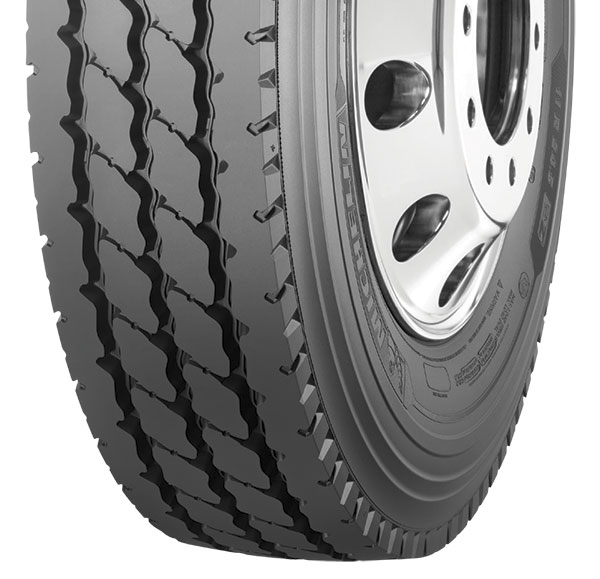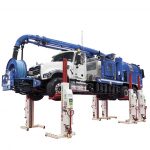In the South, winter transport paraphernalia—specifically tire chains—just isn’t something we think about (or stock in our auto parts stores). But, in some of the rest of the country, icy roads can cause quite a headache. Scott Green, field engineering coordinator, West, Michelin Americas Truck Tires, sheds some insight on tire chain use and maintenance while Charles R. Timmerman, director of service services and solutions marketing, Michelin Americas Truck Tire, gives us a peek at the future of tire technology.
MWS: WHAT KIND OF UPKEEP SCHEDULE ARE FLEETS THAT USE TIRE CHAINS LOOKING AT COMPARED TO THOSE THAT DON’T?
SCOTT GREEN: Many fleets try to manage their tire life so that sets of tires are replaced in the fall, as the winter weather begins. This allows the fleet to operate with maximum tread depth through the winter season. At this time, most fleets will also check their tire chains. Some states require that commercial vehicles carry tire chains during the winter regardless of weather conditions.
Several states, including California and Colorado, frequently mandate chain use when there is snow on the roadway. Checkpoints are set up to verify proper chaining and all vehicles, including commercial trucks, are stopped and inspected.
Fleets that frequently drive in snow conditions in areas that don’t mandate chain use will often run tires optimized for winter traction. These tires are designed with winter rubber compounds and generally have a highly-siped sculpture.
MWS: WHAT IS THE BEST ADVICE YOU HAVE TO KEEP REPLACE/REPAIR COSTS DOWN WHEN USING TIRE CHAINS?
GREEN: Proper installation of chains is critical to minimizing tire damage. The chains must be installed very tightly, per manufacturer’s instructions, which can be a challenge since the chaining is almost always done during inclement weather conditions.
Tire basics that are always important are even more important during slick winter conditions. The correct tire size and tread run at the correct inflation pressure for the load carried will deliver the best safety, traction, and wear for the fleet.
MWS: WHETHER WINTER WEATHER ORIENTED OR NOT, WHAT KIND OF PRODUCTS SHOULD WE LOOK FOR FROM MICHELIN OVER THE NEXT YEAR OR TWO?
CHARLES R. TIMMERMAN: The trends in maintenance technology emerging and maturing over the next five years will be focused on actionable information, such as the “smart tire” and vehicle maintenance efficiencies. Currently, most existing technology revolves around real-time alerts for reactivity to vehicle events, such as low tire pressure, hot brakes, fault codes, recalls, and scheduled preventive maintenance. It is clear that tire manufacturers, as well as telematics providers and new entrants to the market, are beginning the process of leveraging existing and forthcoming data sets for analytics and business intelligence.
Fleets are also interested in collecting tire pressure, temperature, and tread depth/wear for trend analysis and possibly some elementary predictive analytics. Some Fleet Asset Management Systems have tire modules included, which provide basic features for tracking tire life cycle data, but true analytics requires systems that are far more robust. Michelin has one such initiative as part of our digitalization effort to deliver predictive and prescriptive solutions for fleets.
FOR MORE INFORMATION:
Find out more about Michelin tires and other Michelin products and services, visit www.michelinman.com.
_______________________________________________________________________
MODERN WORKTRUCK SOLUTIONS: JANUARY 2017 ISSUE
Did you enjoy this article?
Subscribe to the FREE Digital Edition of Modern WorkTruck Solutions magazine.
![]()




